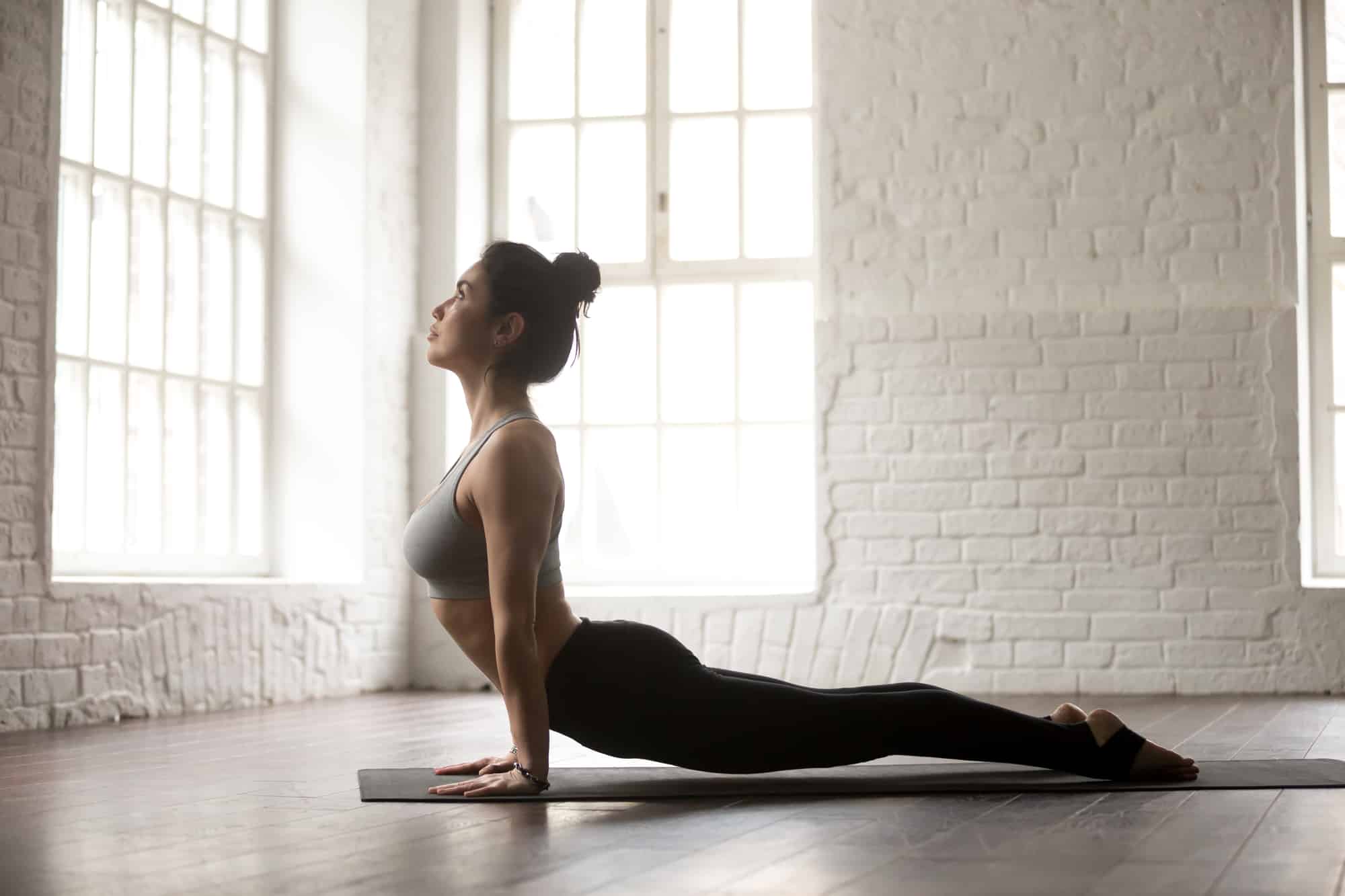This pose is also known as Up dog; this pose is used in the Sun Salutation sequence or as a transition pose in flow yoga. However, it can also be practiced separately. We’ll explain how.
How to Get Into It

The advanced option is to go to an upward-facing dog from Chaturanga.
- For this, when in Chaturanga, on the inhale roll over your toes and at the same time push yourself from the ground straightening your arms. You’ll need to have solid triceps to perform such a push-up.
- Press down through your palms. Don’t sag in the shoulder area.
- Open your chest and look up slightly, raising your chin. Avoid bending your neck too much.
- Straighten your legs by activating the quadriceps.
- Feet are hips-width apart. Press the tops of your feet to the ground. Don’t let the heel slide to the sides and turn them inwards a bit – that helps keep legs activated.
An easier option is to do the pose from a prone position.
- Lie down on the mat and plant your palms under the shoulders. Put the palms closer to the sides of your torso. Feet are hip-width apart (you can put them on the tops right away). Get ready to lift your body off the mat.
- As you inhale, lift the chest. Ensure your elbows are well pressed to the side of the torso so that your hands’ triceps are working for this lift.
- Go through 2-5 points from the position described above.
Benefits
- It helps open the chest and improve strength in the upper back
- Adds to the wrists flexibility and strength
- It helps build strong triceps, especially when you move between Chaturanga and Upward facing dog
- Improves spine flexibility and reduces back pain
- A good stretch for the abdominal muscles
Precautions
Don’t do this asana, if you have carpal tunnel syndrome
Pregnant women should avoid practicing Up dog too
It should be avoided or practiced with caution if you have vertebrae troubles in the lower back
Modifications
There is not much modification available in the upward-facing dog. What’s essential in this pose is the proper alignment of arms, legs and smooth work of the back muscles.
Common Mistakes
Some misalignments that should be avoided are below, primarily if you use Up dog as a part of a regular sequence that is repeated numerous times.
Overcompensation in the lower back
Some students may feel pain in the lower back doing this pose. This means that your upper back is not working correctly, while the lower back goes too deep into the bend to compensate. So your goal here is to make all spine parts work evenly.
Downward Facing Dog (Adho Mukha Svanasana)
For this, concentrate on the thoracic vertebrae engagement:
- You can put your thighs on the mat and make a small circle with your shoulders to release them. Try opening the chest more and pulling your blade bones together while pushing the sternum forward as you inhale. Squeeze the core with your elbows but keep the arms straight. Relax the lower back muscles, but engage your abs to prevent the lower back from bending too much.
- Alternatively, use two blocks under your palms. Ensure your palms are parallel to the mat. The angle between the forearm and the outer side of the palm is nearly 90°. Blocks will help to create some space and prevent the lower back from excessive bending.

Craned neck
Trying to gaze up, some yogis throw the hindhead back and create a wrong shape in the neck. To avoid this, elongate your neck to keep it in smooth line with the spine.
Sagging between hands
It’s typical for a beginner to sag between hands lowering the pelvis and things to the floor. But this creates extra pressure in the neck and takes down the load from the pectoral and shoulder muscles. So, to do things correctly, actively push the ground from you with straight hands.